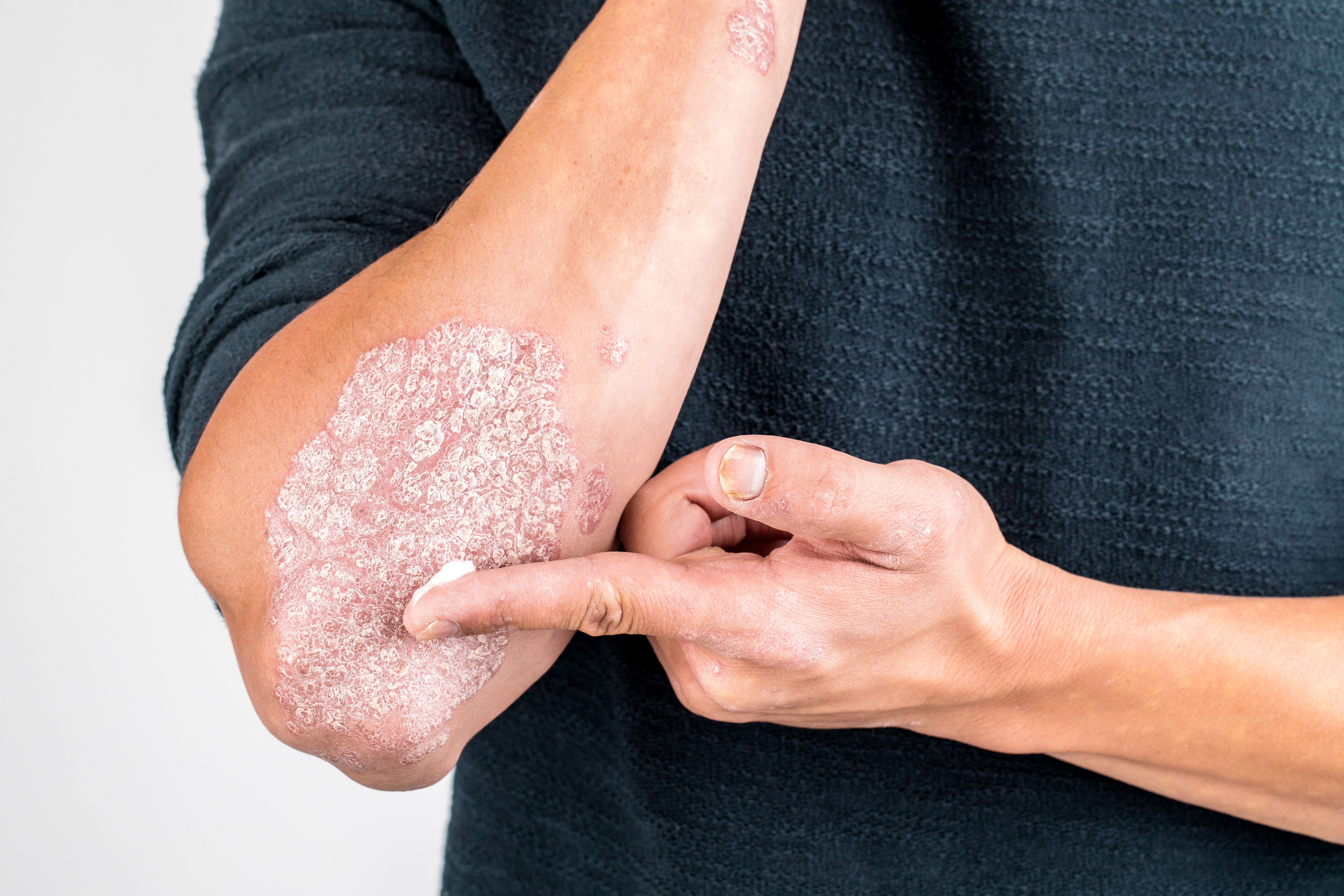- Case-Based Roundtable
- General Dermatology
- Eczema
- Chronic Hand Eczema
- Alopecia
- Aesthetics
- Vitiligo
- COVID-19
- Actinic Keratosis
- Precision Medicine and Biologics
- Rare Disease
- Wound Care
- Rosacea
- Psoriasis
- Psoriatic Arthritis
- Atopic Dermatitis
- Melasma
- NP and PA
- Skin Cancer
- Hidradenitis Suppurativa
- Drug Watch
- Pigmentary Disorders
- Acne
- Pediatric Dermatology
- Practice Management
- Prurigo Nodularis
- Buy-and-Bill
Article
Study characterizes safety of pediatric psoriasis treatments
Author(s):
A retrospective review of pediatric patients treated for psoriasis with systemic agents provides much needed insight about the safety and tolerability of these medications.
A retrospective review of pediatric patients treated for psoriasis with systemic agents provides much needed insight about the safety and tolerability of these medications, and its findings have already led to a change in prescribing practice.
The research, which was a joint project of the Psoriasis Investigator's Group (PsIG) of the Pediatric Dermatology Research Alliance and the European Pediatric Psoriasis Working Group (EPPWG), also reinforced the need for prospective data collection in the pediatric psoriasis population, said Amy S. Paller, M.D., co-principal investigator of the study, and chair of dermatology at Northwestern University Feinberg School of Medicine, Chicago.
Dr. Paller told Dermatology Times, “This is the largest study evaluating children with moderate to severe psoriasis treated with systemic medications. My co-principal investigator from The Netherlands, Marieke Seyger, M.D., and I undertook this project because so little was known about the relative frequency of use of the various systemic medications for pediatric psoriasis and about their side effects in real-world practice.”
“We were also looking for regional differences because it was my impression that gastrointestinal side effects with methotrexate were much higher in Europe than in North America. The study corroborated that idea, identified differences between the two continents in folic acid regimens as the explanation, and led to a change in how folic acid is being prescribed in Europe,” she said.
The recently published retrospective study identified children with moderate to severe psoriasis treated from Dec. 1, 1990 to Sept. 16, 2014 at any of the 10 PsIG and 10 EPPWG centers for moderate to severe psoriasis using systemic medications or phototherapy for at least 3 months. After reviewing thousands of charts, only 390 children were eligible for inclusion based on having information matching the minimal core data set requirements for demographics, treatment duration, efficacy, adverse events, serious adverse events, and reason for treatment discontinuation.
“We reviewed the charts of thousands of patients to find those who met our selection criteria, and our experience clearly showed the need for standardized, prospective data collection for pediatric psoriasis,” Dr. Paller said.
“This need is unlikely to be met without industry cooperation to support creation of a single pediatric database. In the meantime, the exhaustive chart review conducted for this study made us recognize that it would be useful to develop some standard ‘templates’ for collecting data in the clinic for pediatric psoriasis patients,” she said.
THE MOST COMMONLY USED SYSTEMIC AGENT IN PEDIATRIC PSORIASIS
The study found that methotrexate was the most commonly used systemic agent in both North America (76.1%) and Europe (59.4%) followed by a biologic agent, which was used by 106 (27.2%) children, three-fourths of whom received the tumor necrosis factor inhibitor (TNF-I), etanercept (Enbrel, Amgen).
Both methotrexate and TNF-Is were associated with fewer adverse events than other systemic drugs that were used, which included acitretin, cyclosporine, and fumaric acid esters. Compared with a TNF-I, methotrexate was associated with significantly increased risks for having at least one treatment-related adverse event (1.76-fold), an adverse event leading to treatment discontinuation (5.76-fold), a treatment-related gastrointestinal (GI) adverse event (11.49-fold), and a treatment-related laboratory abnormality (3.42-fold).
The risks of having a treatment-related infection and an injection site reaction were significantly lower in patients treated with methotrexate compared with a TNF-I, although Dr. Paller provided a caveat about those findings.
“It should be kept in mind that this was a retrospective study and the capture of information about these adverse events, and particularly infection, might have been different for the two drug groups,” she explained.
Folic acid regimen, but not total dosage of folic acid or methotrexate, predicted GI adverse events with methotrexate. Giving folic acid for 6 or 7 days per week, which was a more standard practice in North America, significantly reduced the risk compared with dosing just once a week, which was the most common regimen prescribed in Europe.
The investigators are now analyzing data to evaluate the relative efficacy of methotrexate and TNF-I treatment for moderate to severe psoriasis in their cohort of almost 400 children.
The study was funded by a grant from the International Psoriasis Council.
REFERENCE
Inge M. G. J. Bronckers, MD; Marieke M. B. Seyger, MD, PhD; Dennis P. West, PhD; et al. "Safety of Systemic Agents for the Treatment of Pediatric Psoriasis," JAMA Dermatology. November 2017. DOI:10.1001/jamadermatol.2017.3029






